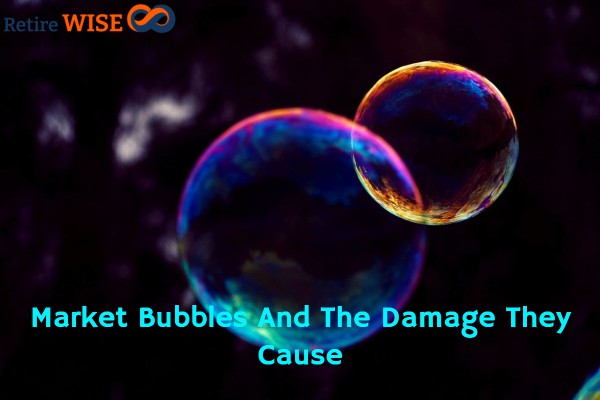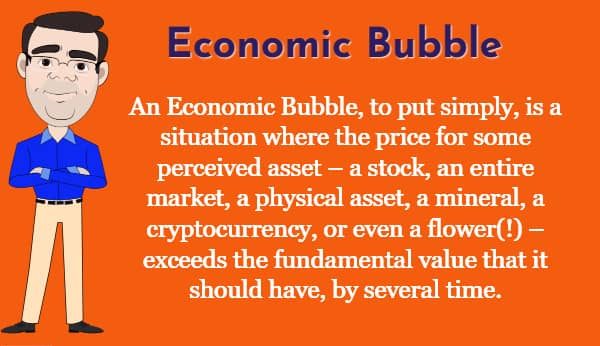We are in the midst of a pandemic that has shaken not only the global health infrastructure but the economies. With lockdowns, travel bans, and all attention and resources diverted towards taking care of the sick, one would expect stock markets to be at dirt-cheap levels. But surprisingly, stock market indices, the world over, are scaling all-time highs.
The markets did fell in early 2020 amid the rising panic about the COVID-19 pandemic and culminated in the global market crash in March 2020. But since then, the spectacular rise in the prices of stocks across the board has baffled everyone. This meteoric rise despite the worst economic recession since Second World War does not make sense to many economists and market watchers, let alone a layperson.

Many fund managers and analysts are saying it is the ‘beginning’ of a long sustaining bull-run, with headlines like Sensex at 200k by 2022 appearing! They are expecting a steep V-shaped recovery.
Another set of cautious analysts and economists are calling this a market bubbles fuelled by easy money. They caution us that when this bubble bursts, it will have a bigger impact on our lives than 2008 global recession.
Must Check – Health Insurance for Diabetics
What is an Economic Bubble?
An Economic Bubble, to put simply, is a situation where the price for some perceived asset – a stock, an entire market, a physical asset, a mineral, a cryptocurrency, or even a flower(!) – exceeds the fundamental value that it should have, by several times.
Only in the hindsight, after the Market bubble had burst, can most people realise that it was too good to be true. A spectacular crash follows in the wake of a Market bubble burst and leaves behind its financial wreckage for governments and common citizens to clear.
Types of Market Bubbles
People can go crazy over anything – from tulips to cryptocurrencies – and therefore, theoretically, there can be an infinite number of asset bubbles. Economic bubble, generally, are either equity bubbles or debt bubbles.
Equity bubbles, or asset bubbles, are caused by unrealistic desire in a large populace to own an asset at any price for possible future gains. Stock market bubbles, economic bubble or asset bubbles, and commodity bubbles fall under this category.
A debt bubble arises due to the issue of too much debt against too little assets to back that debt – sometimes nothing at all! Credit bubbles caused by low-interest rates and complex financial instruments, and currency price bubbles come into this category.

Must Check – Importance of Financial Planning
From boom to bust – Stages, Symptoms, and Reasons.
Noted economist and Nobel Laureate Robert Schiller says a bubble goes through the following stages:
- People get excited about a new phenomenon, or an old one in new packaging. They have excessive and unfounded enthusiasm that asset prices are always going to rise.
- Spreading like a psychological contagion within market players and everyone starts getting optimistic.
- Too much optimism causes fast-soaring prices as there is too much demand and limited supply. It amplifies the fictional stories justifying the price increases, like a self-fulfilling prophecy. People believe what they want to, not what is.
- As a few market players making too much money in too little time gets more publicity, the bubble draws in the general populace – those who had do no idea about markets. We have entered the Euphoria.
- Now some players start profit-booking, which other people lap up in anticipation. But as the profit-booking continues the prices start to drop.
- Finally, all the players realize, usually with even a minor event, that the fundamentals do not support the prices and a panic Everyone wants to sell immediately to book profits or cut short losses. With a sudden supply glut in the market the prices crash.
- With the prices crashing the leveraged transactions cannot hold their value and margin calls are made, fuelling another round of price crash wiping off billions of dollars worth of assets and savings.
Check –Personal Finance Lessons from the Olympics
Havoc Market bubbles cause.
A bubble burst can cause damage that can be limited or unimaginable. That entirely depends on multiple factors – the extent of participation, economic sectors involved, global financial linkages, and the role of easy access to debt in the bubble creation.
For example, when the Bank of Japan rose its interest rates to burst the equity and real estate bubbles between 1989 and 1992, it led to prolonged stagnation in the Japanese economy for over a decade.
On the other hand, the dot-com bubble burst in the USA in 2000 led to a severe financial crisis as too many banks were involved. It did not directly spread to the whole economy though, as market participation was lower.
But the sub-prime mortgage bubble burst of 2007-08 led to a severe recession in almost every sector in the US and global economy. As per estimates, this bubble caused the US economy alone USD 12.8 trillion in losses in the decade of 2008-18.
Must Read – Portfolio Management Services (PMS) in India
Bubble Bursts and Economic Activity
In present times, stock market bubbles can be the cause of a more general economic bubble, and affect not only the national economy but can create severe ripples in the international equity and debt markets.
When major bubbles burst, the GDP of an economy is not directly impacted, but the overall negative sentiment in the economy vaporises. After all, and economy is the sum total of the actions of all of its participants.
With the “wealth effect” gone, people hold on to their savings more tightly and spend less. This results in lower sales, lower output, job cuts, and a vicious cycle of gloom and doom.
Will we (ever) learn!?
The trickiest thing about bubbles is it is hard to spot while you are in one. We can only learn from the earlier bubbles and the damages they caused to identify the next one.

Many bubbles have inflated and bursts through the history of money, and everyone was different. There was, however, only one common factor in all of them – the participants suspended their disbelief at too rosy a future and ignored every sign of caution they came across.
Like Icarus, who flew too close to the sun with wings of wax, after ignoring all the warnings from his father, and fell to his death, we must remember that all market bubbles would eventually crash.
So, do not chase get-rich-quick schemes and do not follow tips for quick profits through speculative trades. If you stick to the time-tested principles of investments, diversification, and time in the market, then most likely you will come out unscathed.
If you don’t have a plan to achieve your goals – TALK TO US.
If you have any questions or observations related to market bubbles – add that in the comment section.
Though the financial condition of our nation and world not healthy, due to Corona pandemic market continues to go up…. everyone is waiting when the correction will come…When the bubble will burst…Or may be operators may afraid of pm…..
It was very nicely explained Hemanth and appreciate taking time and bringing such nice blogs. What do you see the current economic growth, stock market are breaking highs.
What is your personal opinion on current situation ? Are we heading towards another bubble ?
Interesting and insightful one Hemanth.
In hindsight, it is easy to say that it was a bubble. Pertinent question is how to spot the Bubbles while they are building and before they burst. As you indicated at the beginning, in the current situation there are supporting arguments for for both cases i.e. bubble or long term bull run. I am sure that was the case in earlier bubbles too. Your insights will ne helpful.
Informative article, it’s really helpful for a marketer.
Comments are closed.